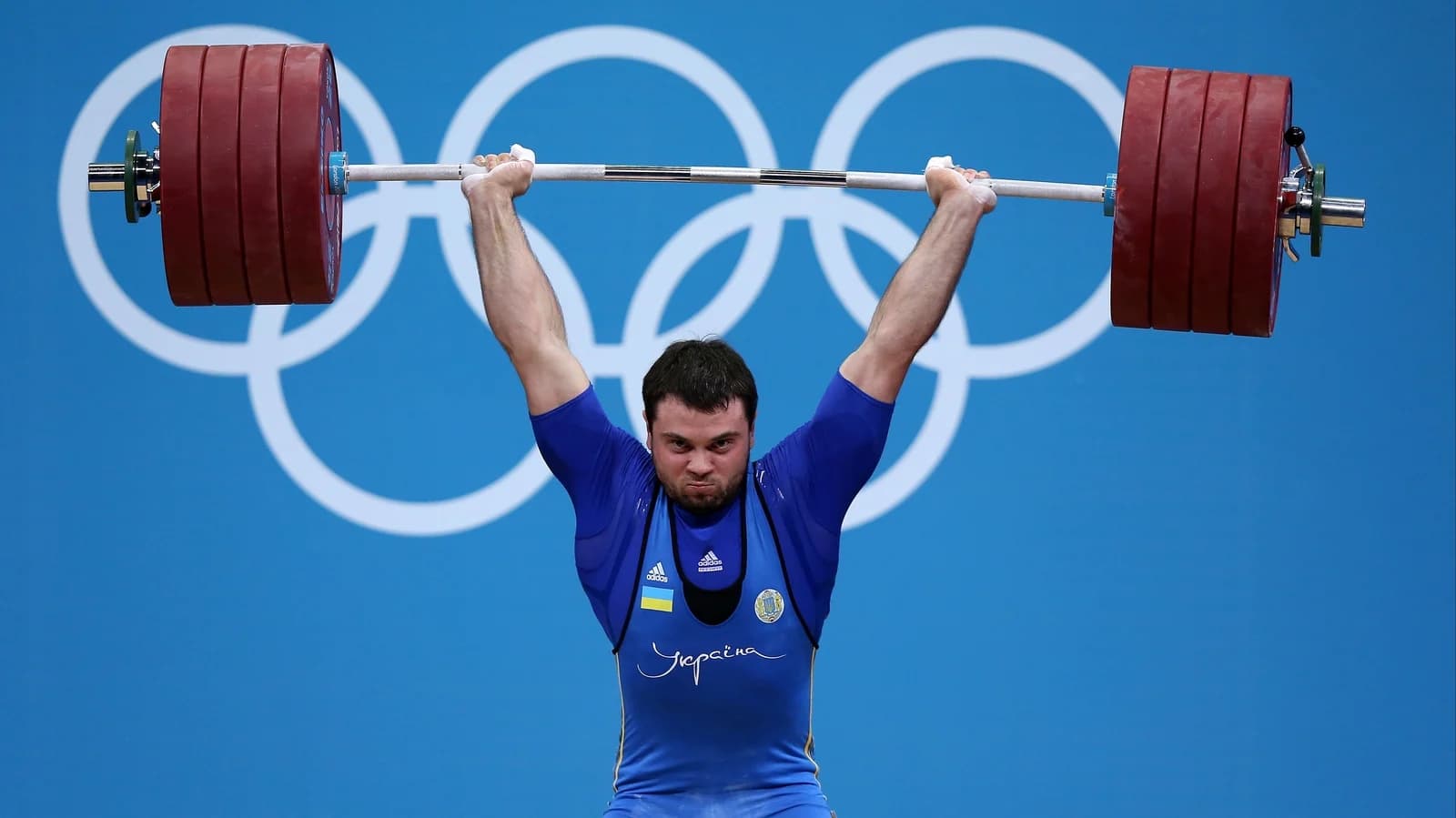How To Start Olympic Weightlifting
Written by The Boostcamp Editors
What is Olympic weightlifting and how is it different from other types of weightlifting?
Olympic weightlifting is a competitive strength sport that involves lifting the maximum weight possible in two specific lifts: the snatch and the clean and jerk. Olympic weightlifting differs from other types of strength training, like CrossFit, because it focuses on explosive power, speed, and technique rather than overall strength or muscular development. It also differs from something like bodybuilding, as the competitors are not judged on their physiques. So, let's take a look at how to start Olympic weightlifting, which exercises are included, how to properly execute them, and give tips on Olympic lifts for beginners.
If you're looking for a challenging but highly-rewarding exercises to add to your workout, Olympic weightlifting is a great choice. Olympic lifts are compound exercises that offer more than meets the eye, different from powerlifting where the main focus is on the squat, the barbell bench press, and deadlift. Apart from strength, they’ll develop your speed, explosive power, balance, agility, and much more.
Additionally, weightlifting as a sport has a large community filled with very skilled and competitive athletes. Depending on your goals, it can add a social or competitive element to your training, giving you even more motivation to exercise.
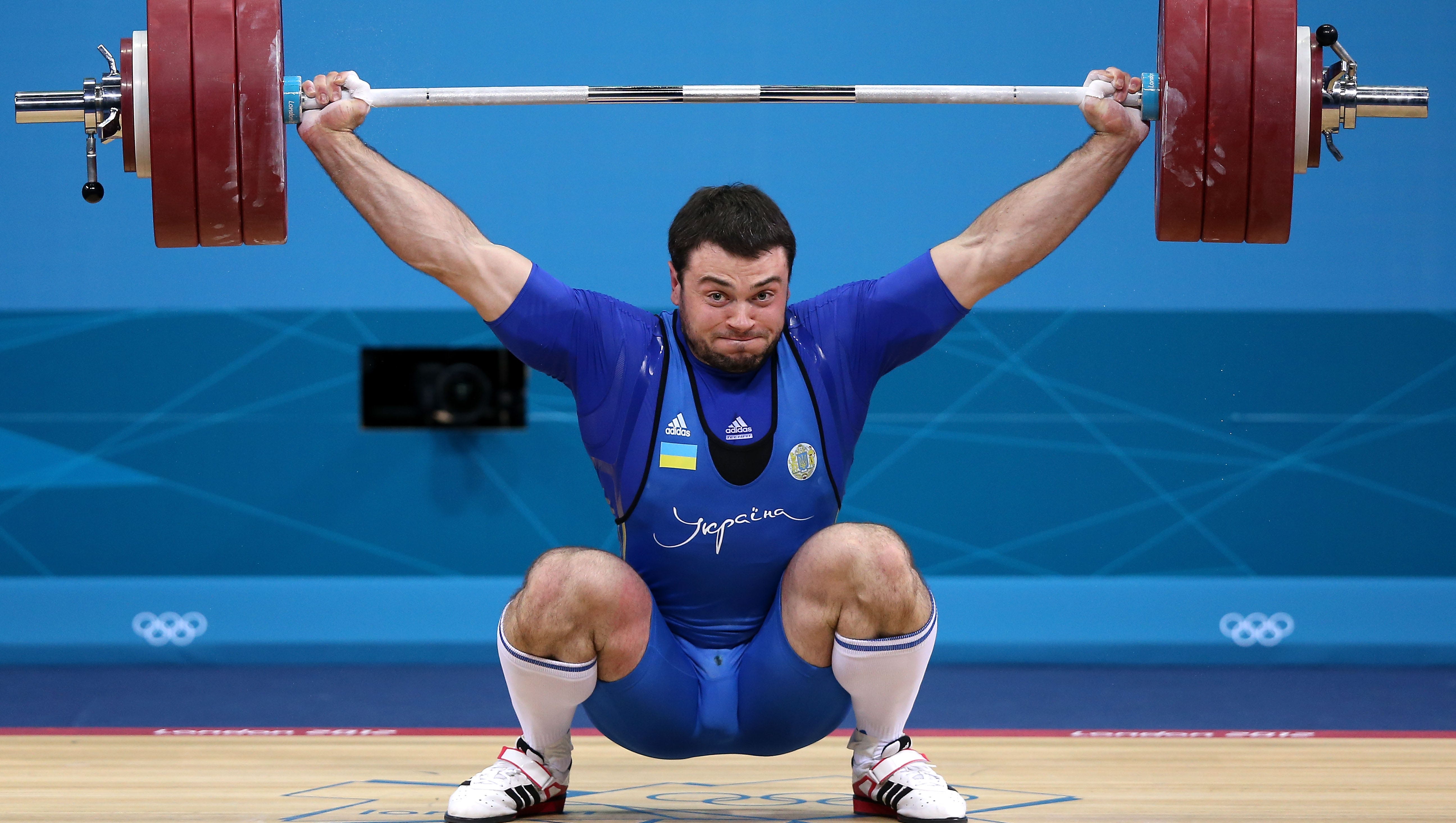
What is Olympic Weightlifting
Before we learn how to get into Olympic weightlifting, let’s first discuss what it is.
As the name suggests, Olympic weightlifting is a competitive strength sport (somewhat like powerlifting), most notable for being part of the Summer Olympic Games circuit. Although physical strength plays a key component in it, the sport is still highly technical and requires speed, explosiveness, and proper technique to execute properly. The goal is not to build muscle mass, but instead to be explosive and strong.
The sport has a long and rich history, dating back to ancient Greece and the origins of the Olympic Games. In recent history, Olympic weightlifting was included in the 1896 first modern Olympic Games in Athens, Greece. However, it was much different than what it’s like today.
Firstly, there was a single category for all competitors regardless of their size. Second, athletes competed in single-handed and two-handed lifting and received a medal for each, as opposed to today’s combined scoring. Additionally, there were barely any rules regarding form and technique, and competitors were simply judged by who could lift the most. But over the years, the sport has evolved, with new rules such as weight category slowly being introduced to ensure fair and safe competition. In 1928, the competition officially dropped the single-handed exercises in favor of three two-handed lifts - the Snatch, the Clean and Jerk, and the Clean and Press. In 1972, due to controversies regarding proper form and technique making judging difficult, the Clean and Press was officially removed from the Olympic Games.
Since then and to this day, Olympic weightlifting consists of two main lifts, the Snatch and the Clean and Jerk, with athletes competing in different weight categories based on their body weight.
Let’s break down both lifts to help you learn Olympic weightlifting.
The Snatch
The Snatch is a challenging and dynamic weightlifting exercise that uses a combination of strength, speed, and technique to properly execute. On top of that, it requires a high dose of explosiveness, agility, and balance to perform to a high degree. The exercise involves lifting a barbell from the ground up into an overhead squat position, then standing up.
The Snatch is a compound exercise, which means it targets multiple muscle groups. These groups mainly include, but are not limited to hamstrings, shoulders, quads, back, and arms. The exercise also requires a high degree of core stability and strength to maintain balance and control throughout the movement.
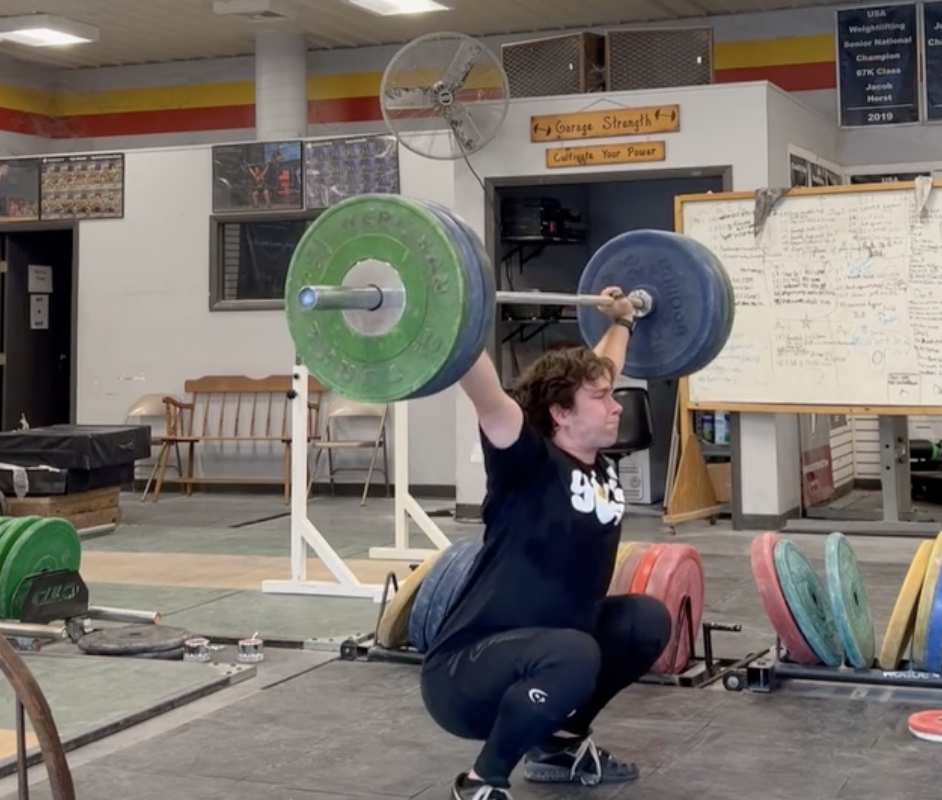
How To Properly Perform The Snatch
When it comes to properly performing the snatch, assume the starting position by standing with your feet shoulder-width apart and toes pointed slightly outward, with the barbell on the ground over your feet. Grip the barbell over the top and bend down into a full squatting position with your knees pointing outwards. Your hands should be gripping the barbell slightly wider than shoulder-width apart.
If you’re using an Olympic barbell, depending on your size, your grip should finish somewhere on the further end of the knurling, close to the weight plates. Your elbows should rest on and bend around your knees, which is an easy way to measure if you have the right arm width.
Before you start to pull up, make sure that your hips are slightly lower than your shoulders and that your back is straight. Now that you’re comfortable in the starting position, begin the exercise by pushing hard with your feet into the ground. Extend your knees and back as if to return to a standing position, and the barbell should start lifting up. Keep your shoulders over the bar and ensure that it remains close to your body throughout the movement.
As your legs return to an upright position, explosively extend your hips, knees, and ankles to accelerate the bar upward. If done correctly, the motion should feel as if the barbell “bounced” off your pelvic area. The force you generated by pushing hard into the ground should lead to your heels lifting off. Use this moment to perform a slight hop - with proper technique your feet should lift slightly off the ground and land slightly in front of where they started.
At the same time, the bar should have traveled along your upper body and to its highest point, which should be at the height of your head in a standing position. As you land from the hop, quickly drop your body under the barbell, rotating your wrists to catch the barbell into an overhead position. Your arms should be fully extended and your feet should finish in a squat position, with your thighs parallel to the ground and hips slightly below the knees.
Clean & Jerk
The Clean and Jerk, sometimes stylized as “Clean & Jerk” is the second Olympic lift. Like the Snatch, it’s a compound exercise that requires strength, speed, and technique, as well as explosiveness, agility, and balance to execute properly. It takes arguably less strength to pull off, but the movement is more complex due to it being a two-part exercise and requires more practice to perfect.
The Clean and Jerk involves combining two distinct movements - the “Clean” and the “Jerk” - hence the name.
The Clean requires you to lift the barbell off the ground into a racked position on the shoulders. This part primarily targets the lower body muscles, including the glutes, hamstrings, and quads.
The Jerk requires you to push the barbell from the racked position into an overhead position, primarily targeting the upper body muscles, including the shoulders, back, and arms.
Since the Clean and Jerk has distinct lower and upper body sections, it’s often favored as the more well-rounded and safer full-body exercise than the Snatch, which makes it more popular in cross-training workouts.
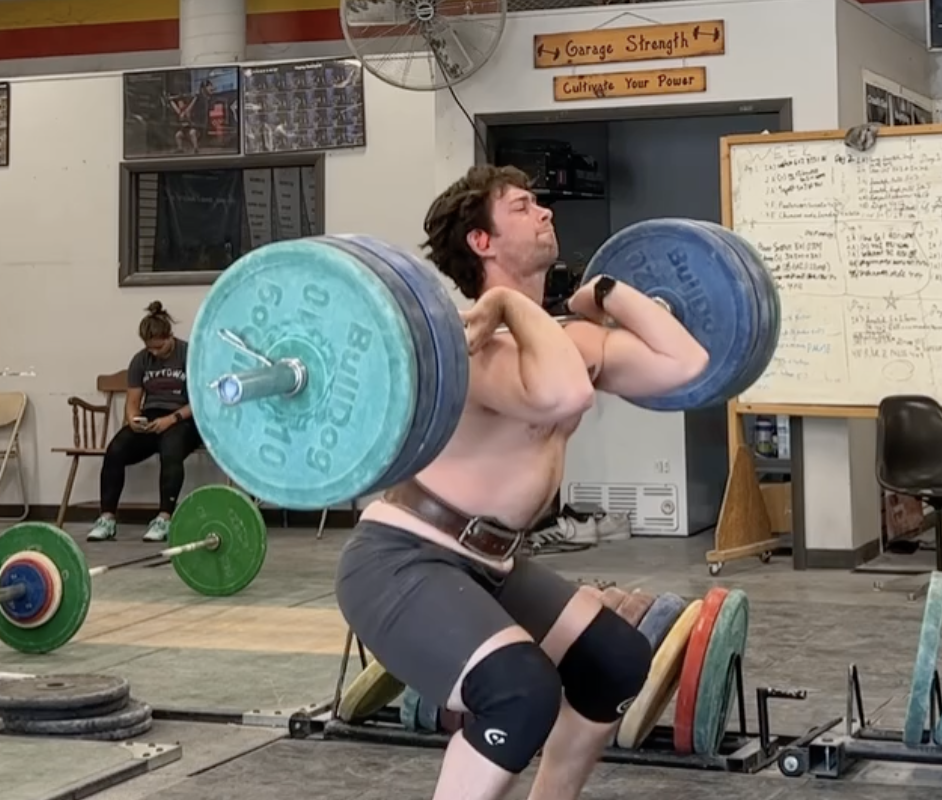
How To Properly Perform The Clean And Jerk
Start by standing with your feet shoulder-width apart and your toes pointing slightly outward. The barbell should be on the ground and over your feet in front of you, with your hands gripping it slightly wider than shoulder-width apart. If you’re using an Olympic barbell with proper knurl marks, depending on your size, the correct position for your palms will be somewhere on the inner knurling. To assume the start position, bend down into a half-squat - your hips should be leveled with or just slightly above your knee position, depending on your grip comfort.
When you’re comfortable in the starting position, begin the Clean by pushing your feet into the ground and extending your upper body back into a standing position, which will start lifting the bar up. Keep your back straight and the bar as close as possible to your body - many advanced athletes keep it so close it even grazes their shins as it goes up.
Once the bar passes your knees, explosively extend your hips, knees, and ankles to accelerate it. As the bar reaches its highest point, your heels should start lifting off the ground, at which point you’ll perform the slight hop. Use this moment to drop your body under the bar and receive it on your shoulders, with your elbows should be pointed forward. Depending on your weight, you should land anywhere from a half squat to a full squat position. No matter, lift yourself up into a standing position, keeping the bar resting on your shoulders.
Once you have caught the barbell in the Clean position, it’s time for the Jerk. Dip down slightly by bending your knees and hips while keeping your core tight and your chest up. Then, explosively extend your legs to drive the bar upward and press it overhead using your arms. As the barbell is “flying” overhead, perform another hop and land in either a half squat or split squat position (one leg forward, one leg back), catching the barbell overhead.
Both landings are competitively viable, although the half squat may be more well-rounded for exercise than the split. To complete the lift, you must stand up straight and balance the barbell.
Why Should You Start Olympic Lifting
Full-body Workout
Olympic lifting targets multiple muscle groups at once, providing a full-body workout that can improve overall fitness levels. Both exercises primarily target the glutes, hamstrings, quads, shoulders, and back, with slight variations on core and arm muscles depending on the lift. On top of training your strength, these lifts develop your speed, explosiveness, agility, and balance, among other things. Olympic lifts also increase endurance and mimic movements often found in traditional sports, making them great for improving athletic performance and reducing the risk of injury.
Physical And Mental Health
We’ve already touched on the various muscle groups and physical attributes that benefit from weightlifting. Adding to that, Olympic lifts also improve joint health, mobility, and functionality by strengthening the muscles and connective tissues around them Although weightlifting is primarily seen as a way to build strength and muscle, resistance training is excellent at burning fat as well. Additionally, research has also shown that weightlifting can be more beneficial for cardiovascular health than cardio itself. On top of that, in recent years, there’s been a lot of discussion about the links between weightlifting and mental health.
According to a report by Harvard Health Publishing, people who perform weight training two or more times a week are significantly less prone to common mental health issues such as depression. Olympic lifting also requires a high degree of discipline, focus, and concentration, which can help build mental toughness and resilience.
Community And Competition
As a sport, Olympic lifting is a big part of the fitness community both in person and online. Practicing in a public gym with a partner or in a group setting or posting videos on social media can add a social element to your workout routine, helping you meet and network with like-minded people. Additionally, if you have a high competitive drive, there are plenty of fitness competitions that involve Olympic lifts that you can partake in. Both of these factors can give your training a higher sense of purpose and motivate you to push yourself.
Olympic Lifting Tips For Beginners
Practice Makes Perfect
Olympic lifts require learning proper technique to be performed safely and effectively, they’re not an exercise that can be perfected on the first few tries. You shouldn’t try to immediately complete the movement. Instead, start by practicing the lift part of each exercise first before moving on to catching the bar.
Form Is Paramount
Other than too much weight, Improper form is arguably the most common cause of injury when attempting weightlifting. People have differing anatomy, but the general rules stay the same for everybody. Be sure to keep your back straight, shoulders back and down, and knees in line with your toes. Keep your feet flat on the ground and your weight distributed evenly across your feet.
Don’t Stress Over Weight
When first starting olympic weightlifting, depending on your athletic level, you should use low or even no weight at first. Many coaches even start off their clients with a weightless yoga stick instead of a barbell until they’re happy with the progress. Adding too much weight too early will lead to struggling, which forces your body to try and compensate in other ways and look for shortcuts. This is the easiest way to develop bad habits and improper technique, which can be difficult to unlearn later.
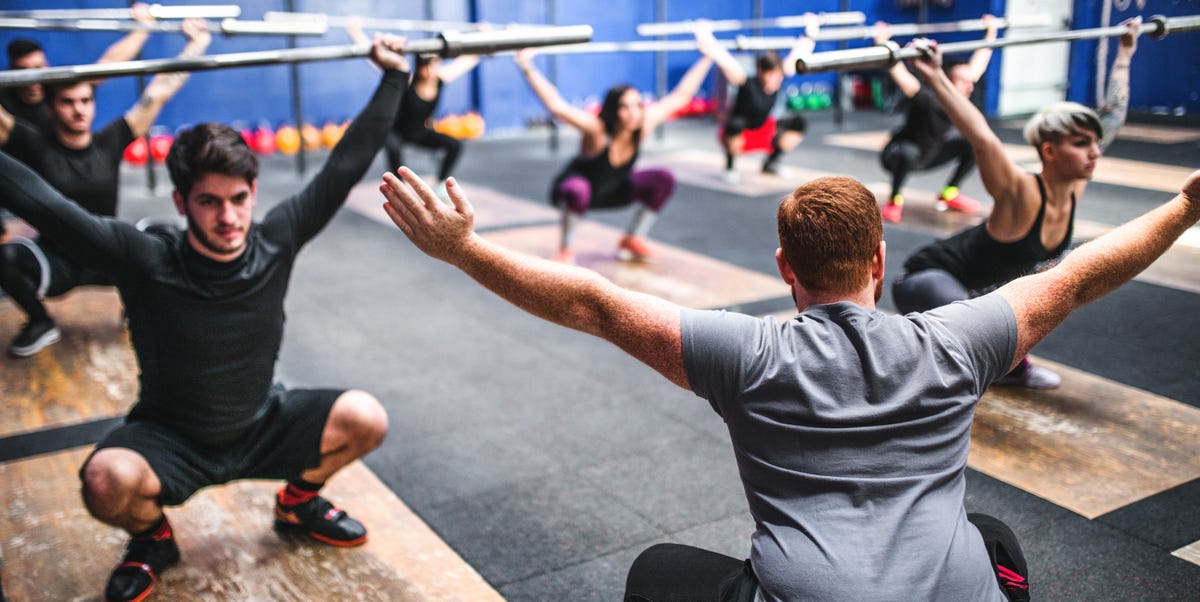
Common Olympic Lifting Beginner Mistakes To Avoid
Not Warming Up Properly
Skipping warming up is a common mistake beginners make in exercise in general. However, Olympic lifts especially put a lot of stress on the entire body. If you attempt to do them on a cold body, the risk of injury rises. A couple of minutes of light cardio and some stretching exercises for your wrists, hips, ankles, and shoulders already make your lift attempts much safer.
Using Arms Too Much
A common mistake beginners make is using their arms to lift the weight. However, at no point during either lift do you actually pull or push the barbell up with your arms. Arms play an important role in stabilizing and controlling the weight once it’s overhead, however, they contribute almost no force to the lift itself. As much as 80-90% of Olympic lift power comes from the legs, hips, and back.
Rushing Through The Lifts
Olympic lifts require a lot of explosiveness and speed, however, that doesn’t mean you need to execute them as quickly as possible. Rushing through a lift is an easy way to get hurt. Take your time and focus on proper form and technique, and speed will simply come from muscle memory as you become more efficient with the lifts.
Not Asking For Feedback
Olympic lifts are complex and it’s easy to overlook mistakes. If you train in public, seek guidance from a coach or experienced lifter. If you train alone in a garage or home gym, record yourself and share it within lifting communities on places like Facebook, Reddit, etc.
Programs
If you are looking for some workout programs to get started on your Olympic weightlifting journey, Boostcamp is the answer. With over 50 free pre-written programs, and the option to create your own workout program, you cannot go wrong.
Conclusion
If you made it this far in the article, you now know how to start Olympic weightlifting. Thank you for reading. Olympic lifts are a great addition to any workout, as they provide a full-body exercise that develops both strength and functionality. Remember to focus on learning technique and form first and seek feedback to help you improve faster.
Are you excited to start Olympic lifting? Which of the two is your favorite lift? Feel free to share your thoughts in the comments and remember to follow our social media pages for more valuable fitness content.
Let us know what you think! And be sure to follow Boostcamp on Instagram and subscribe on YouTube!
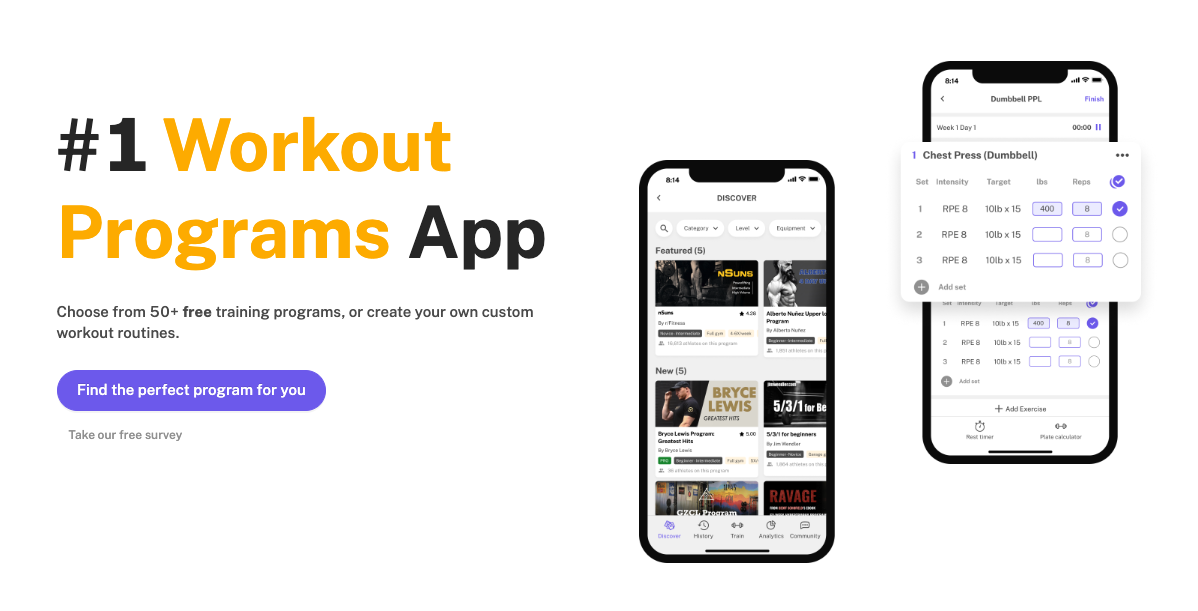
Guest post by https://torokhtiy.com/
